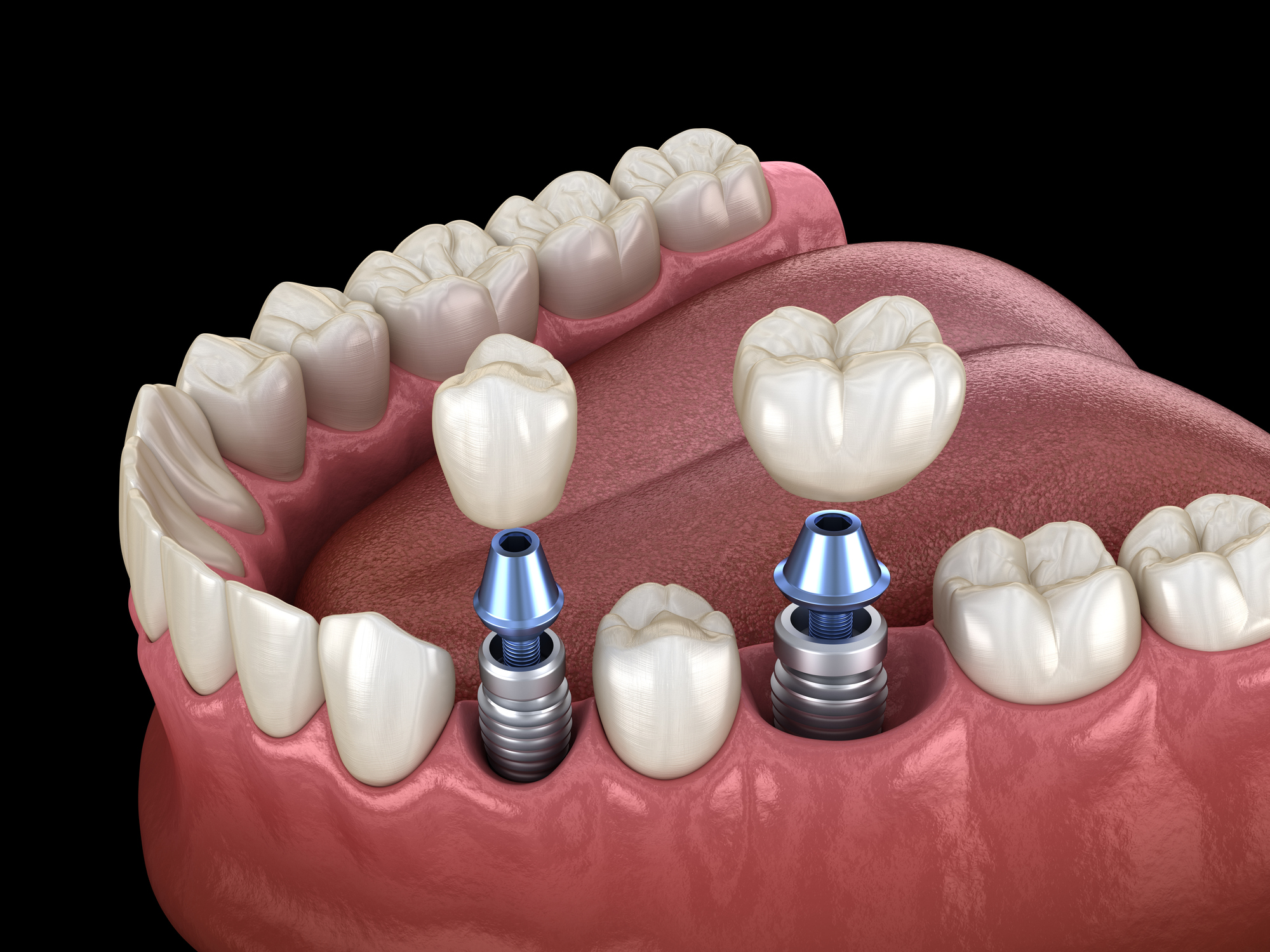Dental Sense Things To Know Before You Get This
Dental Sense Things To Know Before You Get This
Blog Article
What Does Dental Sense Do?
Table of ContentsThe Ultimate Guide To Dental SenseSome Ideas on Dental Sense You Should KnowAn Unbiased View of Dental SenseThe Basic Principles Of Dental Sense
are clinical gadgets surgically dental implanted right into the jaw to bring back a person's capacity to chew or their look. They provide assistance for fabricated (fake) teeth, such as crowns, bridges, or dentures. When a tooth is lost as a result of injury or condition, a person can experience complications such as quick bone loss, malfunctioning speech, or modifications to eating patterns that result in pain.Oral dental implant systems include a dental implant body and oral implant abutment and may also consist of an abutment addiction screw. Front tooth filling. The oral implant body is operatively put in the jawbone in area of the tooth's origin. The dental implant abutment is usually connected to the dental implant body by the joint fixation screw and extends through gum tissues right into the mouth to support the attached man-made teeth
(https://www.avitop.com/cs/members/dentalsense1.aspx)Structure of The Dental Implant System picking dental implants, talk to your dental provider about the potential benefits and risks, and whether you are a prospect for the procedure. Points to think about: Your overall health is an important element in identifying whether you are a great prospect for oral implants, for how long it will certainly take to heal, and exactly how long the dental implant may remain in place.
Smoking might influence the healing procedure and decrease the long-lasting success of the dental implant. The healing procedure for the implant body may take numerous months or longer, throughout which time you generally have a short-lived joint in area of the tooth. the dental implant treatment: Carefully follow the oral hygiene directions given to you by your oral service provider.
8 Easy Facts About Dental Sense Shown
Implant failing can result in the need for an additional procedure to deal with or replace the dental implant system. Recovers the capacity to eat Restores cosmetic look Helps keep the jawbone from reducing because of bone loss Maintains the health of the surrounding bone and periodontals Aids keep nearby (neighboring) teeth secure Improves high quality of life Damages to bordering natural teeth during implant placement Injury to the surrounding cells throughout surgical treatment, such as sinus opening Injury during surgery (as an example, fracture of surrounding jawbone) Insufficient function, such as feeling like the teeth do not attack with each other generally A sensation that the tooth is loose or twisting in position resulting from an abutment screw loosening Implant body failure (looseness of the implant body) due to systemic infection, which might be more probable in people with unchecked diabetes due to local infection in bone and gums sustaining the dental implant body because of delayed recovery, which might be a lot more likely in patients who smoke Problem cleansing the gum tissues around the implant, leading to bad oral health Untreated gum condition Post-surgical tingling because of nerve impingement or damage Constantly alert wellness care suppliers and imaging service technicians that you have dental implants before any kind of magnetic vibration imaging (MRI) or x-ray treatments.
FDA is not familiar with any see here now type of adverse occasions reported for MRI or x-ray procedures with dental implants. Dental implants systems are typically constructed from products that follow global consensus criteria of the International Organization for Standardization (ISO) or ASTM International. These criteria have details of what makes a risk-free product.

An oral implant is a framework that replaces a missing tooth. With screw-like gadgets, the doctor inserts a dental implant right into the jawbone, and it acts as a support for an artificial tooth, called a crown.
Dental Sense Fundamentals Explained
Some people are not eligible for oral implant surgery. It is for dental specialists to operate on people with: severe illnessuncontrollable metabolic diseasebone or soft tissue disease or infectionIf these issues are fixed, a person can have the surgical procedure. In, oral surgeons avoid from operating individuals with: If people with any of the above undergo oral implant surgical treatment, there is a higher threat of the implant falling short.

Oral dental implant surgical procedure is a customized procedure. It's not the very same for everyone. But the complying with offers a general introduction of what you can expect your dental professional, oral specialist, periodontist or prosthodontist to do: Position the implant surgically. Give you time to heal. Attach the message and final crown, bridge or denture.
Next off, your specialist will carefully put the dental implant into your jaw. Your doctor will certainly reposition your gum tissues and shut the cut with stitches. If your implant is near the front of your mouth, your dentist will certainly make a short-term tooth for you to wear till you recover. This way, you won't have a void in your smile while you recoup.
The Ultimate Guide To Dental Sense
Throughout the healing stage, your jawbone needs to fuse to the dental implant. This procedure can take anywhere from three to nine months.
When your implant heals, your dental practitioner can connect the joint (small adapter blog post) and your final repair (crown, bridge or denture). This usually takes about one hour to complete and might call for a second minor surgical treatment. You should not feel any type of discomfort throughout your oral implant procedure because your copyright will utilize drug to numb your gum tissues.
Report this page